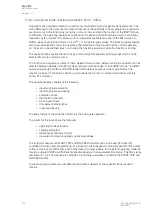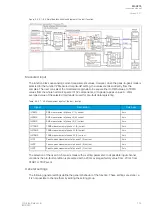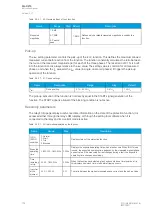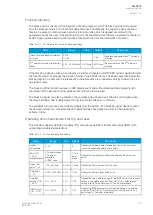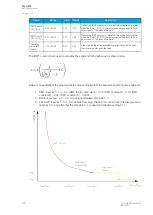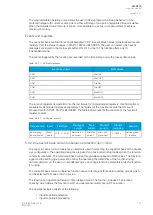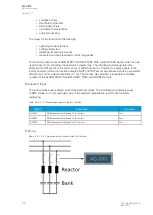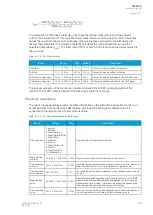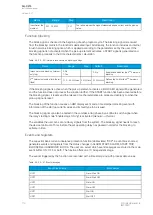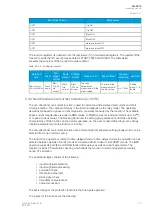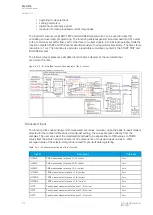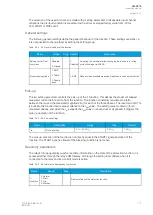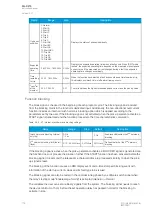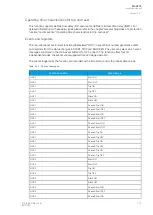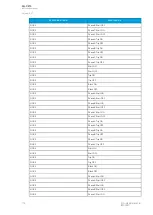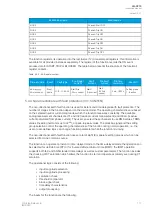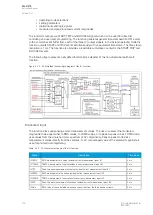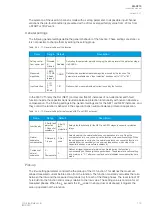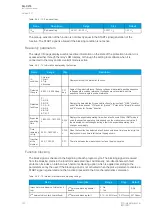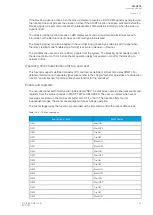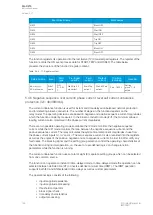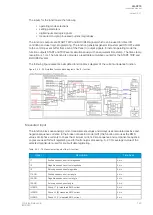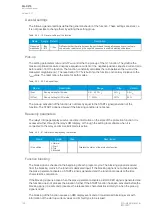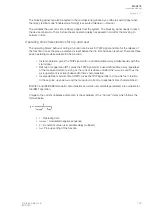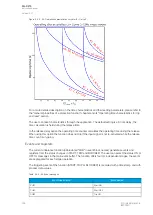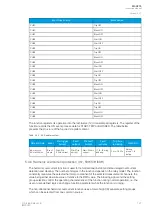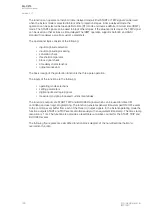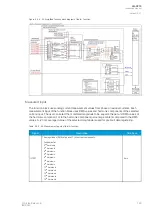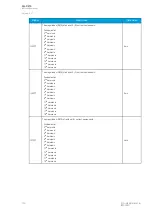
Operating time characteristics for trip and reset
This function supports definite time delay (DT) and inverse definite minimum time delay (IDMT). For
detailed information on these delay types please refer to the chapter "General properties of a protection
function" and its section "Operating time characteristics for trip and reset".
Events and registers
The non-directional overcurrent function (abbreviated "NOC" in event block names) generates events
and registers from the status changes in START, TRIP and BLOCKED. The user can select which event
messages are stored in the main event buffer: ON, OFF, or both. The function offers four (4)
independent stages; the events are segregated for each stage operation.
The events triggered by the function are recorded with a time stamp and with process data values.
Table. 5.4.3 - 68. Event messages.
Event block name
Event names
NOC1
Start ON
NOC1
Start OFF
NOC1
Trip ON
NOC1
Trip OFF
NOC1
Block ON
NOC1
Block OFF
NOC1
Phase A Start ON
NOC1
Phase A Start OFF
NOC1
Phase B Start ON
NOC1
Phase B Start OFF
NOC1
Phase C Start ON
NOC1
Phase C Start OFF
NOC1
Phase A Trip ON
NOC1
Phase A Trip OFF
NOC1
Phase B Trip ON
NOC1
Phase B Trip OFF
NOC1
Phase C Trip ON
NOC1
Phase C Trip OFF
NOC2
Start ON
NOC2
Start OFF
NOC2
Trip ON
NOC2
Trip OFF
NOC2
Block ON
NOC2
Block OFF
NOC2
Phase A Start ON
NOC2
Phase A Start OFF
NOC2
Phase B Start ON
A
AQ
Q-C215
-C215
Instruction manual
Version: 2.07
© Arcteq Relays Ltd
IM00040
115


